
Reference: RBD-1354
Jumper Wire Single 20cm
Length: 8 inches/20 CM (Long) Material: Copper Plated Pin Spacing: 2.54mm.
Reference: RBD-1354
Length: 8 inches/20 CM (Long) Material: Copper Plated Pin Spacing: 2.54mm.
Reference: RBD-0351
Contactless transmission of data and supply energy (no battery needed) Operating distance: Up to 100mm (depending on antenna geometry) RoboticsBD Operating frequency: 13.56MHz Data transfer: 106 kbit/s Data integrity: 16 Bit CRC, parity, bit coding bit counting Anticollision Typical ticketing transaction: <100 ms ( including backup management)...
Reference: 0245
Choose your desire Resistor value from below:
Reference: 0031
3 Types Available (Please select from option) 1. Male to Male 2. Male to Female 3. Female-Female
Reference: RBD-0768
Size: 5mm Color: RED Head Shape: Round Lens Appearance: Transparent
Reference: 1353
Length: 12.5 inches/30 CM (Long) Material: Copper Plated Pin Spacing: 2.54mm.
Reference: RBD-0761
Breadboard friendly Mounting Style: Through Hole Mounting Direction: Vertical

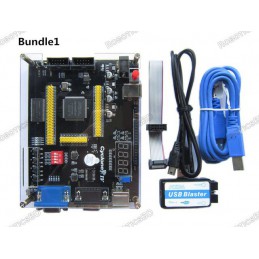
 Store Pickup Available!
Store Pickup Available!
 Free Ship Over 5000 BDT
Free Ship Over 5000 BDT
 Quality Product
Quality Product
 No Warranty
No Warranty
 No Replacement
No Replacement
Altera Cyclone IV EP4CE6 FPGA Development Board NIOSII EP4CE PCB and USB Blaster Jtag AS Programmer. Featured By RoboticsBD.
This is an all-new development board based on EP4CE10 FPGA. The ALTERA Cyclone IV EP4CE6 FPGA Development Board extends the cyclone FPGA series leadership in providing the market’s lowest cost, lowest power FPGAs, now with a transceiver variant. Cyclone IV devices are targeted to high-volume, cost-sensitive applications, enabling system designers to meet increasing bandwidth requirements while lowering costs. Featured By RoboticsBD.
Providing power and cost savings without sacrificing performance, along with a low-cost integrated transceiver option, Cyclone IV devices are ideal for low-cost, small-form-factor applications in the wireless, wireline, broadcast, industrial, consumer, and communications industries. Featured By RoboticsBD.
Product Images are shown for illustrative purposes only and may differ from the actual product.
RoboticsBD RoboticsBD RoboticsBD RoboticsBD RoboticsBD RoboticsBD RoboticsBD RoboticsBD RoboticsBD RoboticsBD
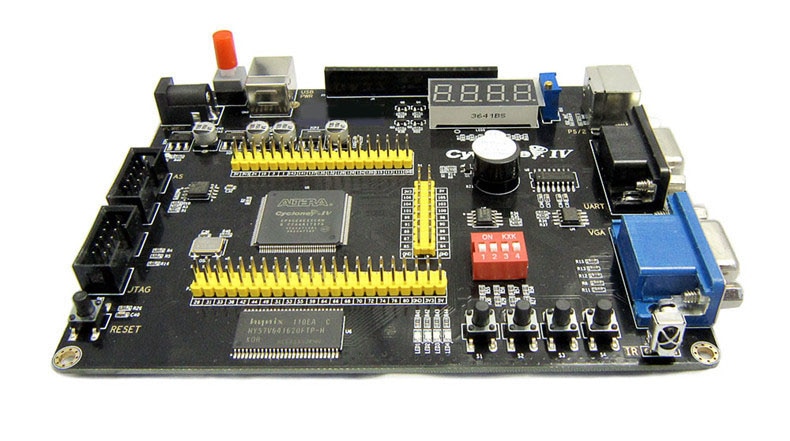
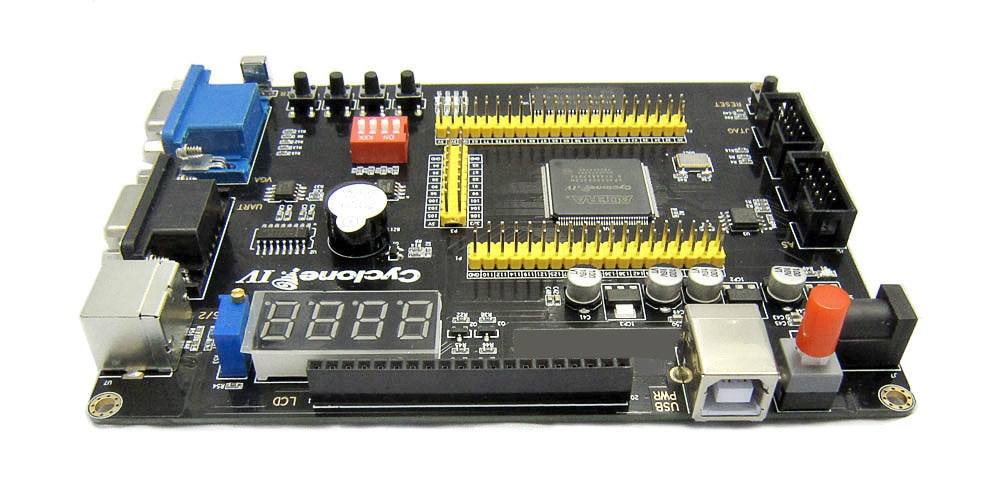
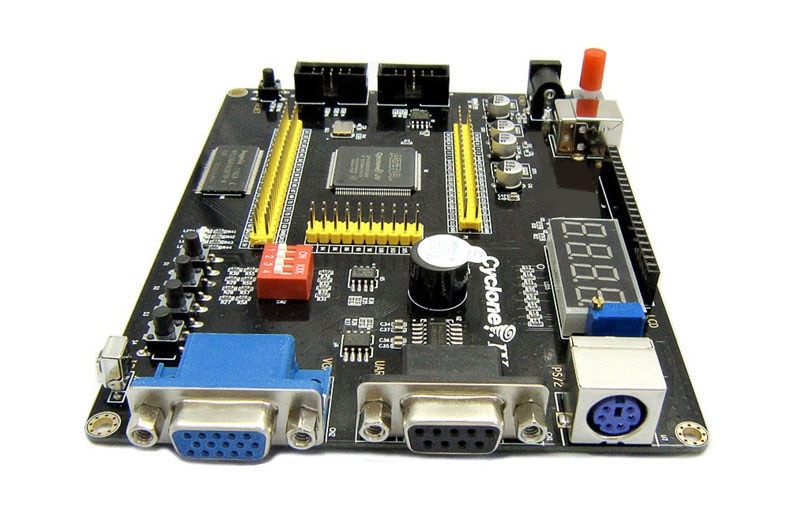
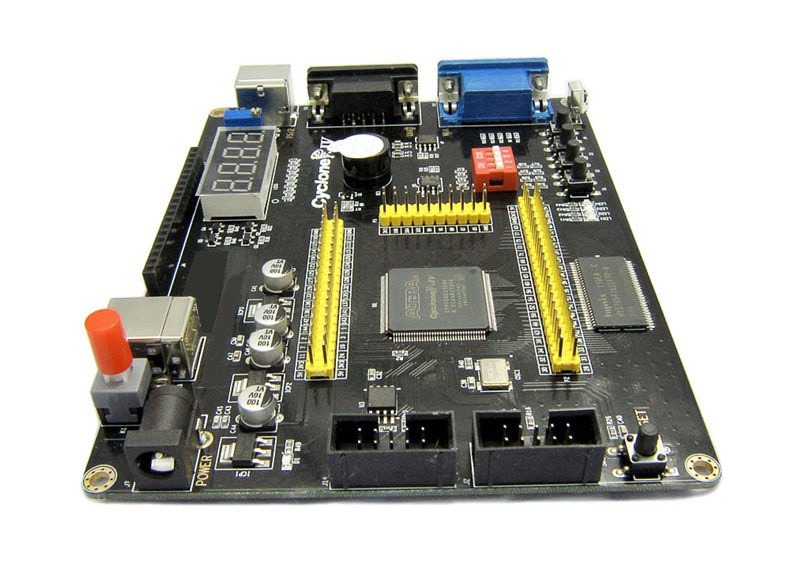
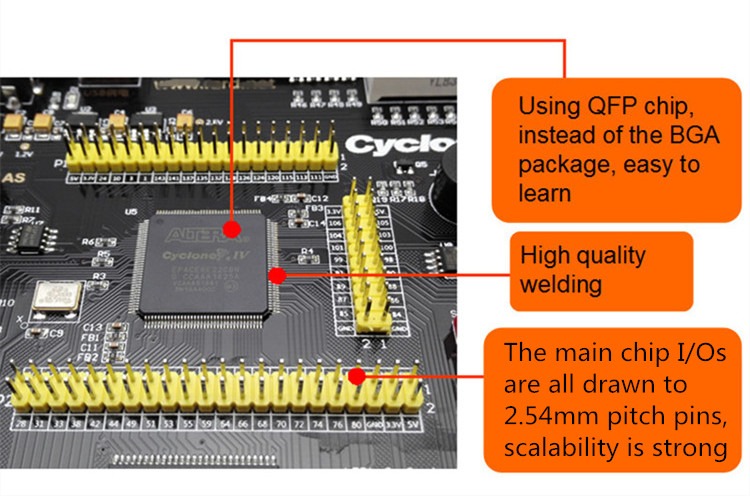
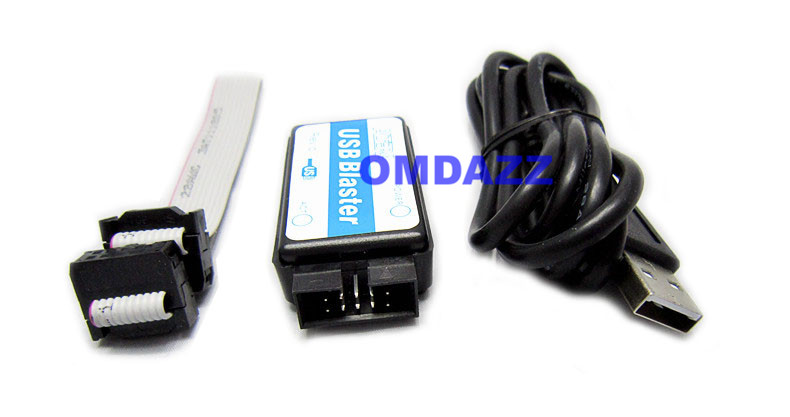
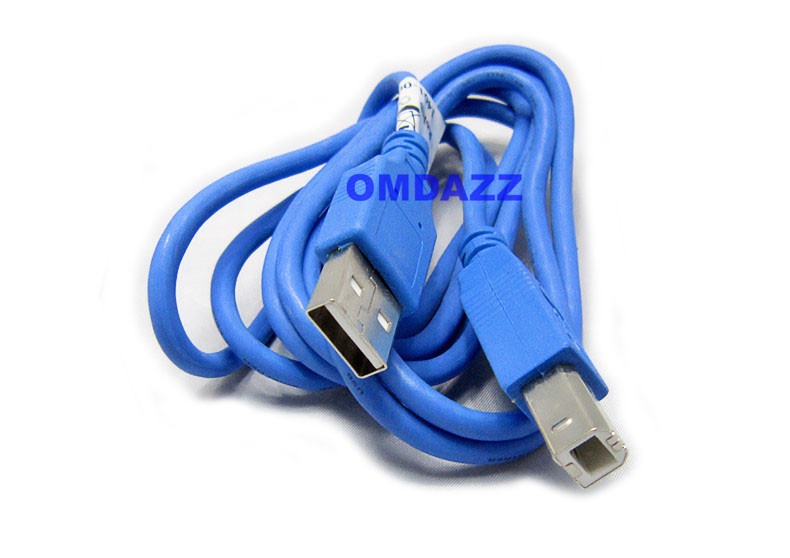
RoboticsBD RoboticsBD RoboticsBD RoboticsBD RoboticsBD RoboticsBD RoboticsBD RoboticsBD RoboticsBD RoboticsBD
| General Specification | |
| Main chip | ALTERA Cyclone IV EP4CE6E22C8N. |
| Memory configuration | The board with 16Mbit EPCS16N serial configuration chip, the user can download and debug the program code via JTAG interface or AS interface. |
| Memory configuration | The board with 64Mbit SDRAM, support SOPC, NIOSII development. |
| The voltage regulator chip | Using 1117-3.3V voltage regulator chip, to provide 3.3V voltage output. |
| The voltage regulator chip | Using 1117-1.2V voltage regulator chip to provide FPGA core voltage. |
| The voltage regulator chip | Using 1117-2.5V voltage regulator chip, to provide PLL voltage output. |
| Voltage input | DC 5V. The board also can be powered through the USB interface. |
| Program debug and download interface | JTAG interface: download .SOF file, the speed is fast. No loss of data after power failure. |
| AS interface | Download .POF file. No loss of data after power failure. |
| Expansion interface | Leads to all pins of the main chip, 2.54mm spacing. |
| Size: | 136mm x 106mm |
| Shipment Weight | 0.326 kg |
| Shipment Dimensions | 15 × 15 × 7.5 cm |
Please allow 5% measuring deviation due to manual measurement.
RoboticsBD RoboticsBD RoboticsBD RoboticsBD RoboticsBD RoboticsBD RoboticsBD RoboticsBD RoboticsBD RoboticsBD
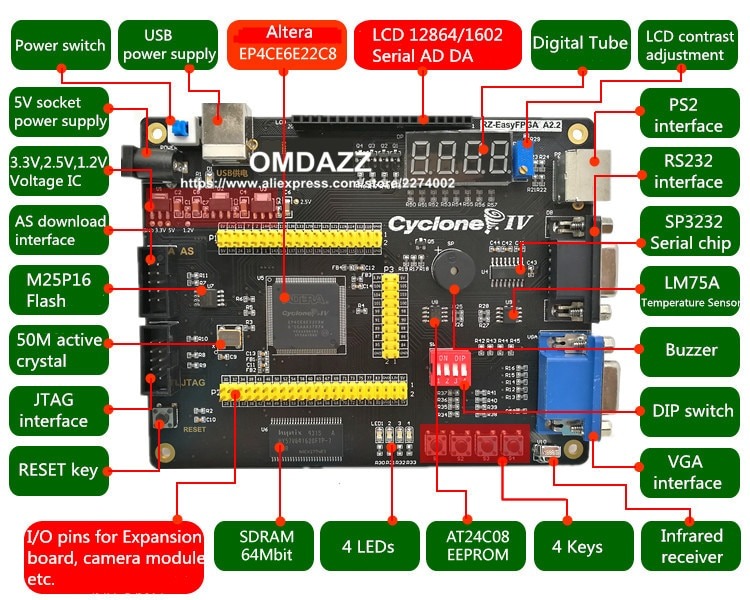
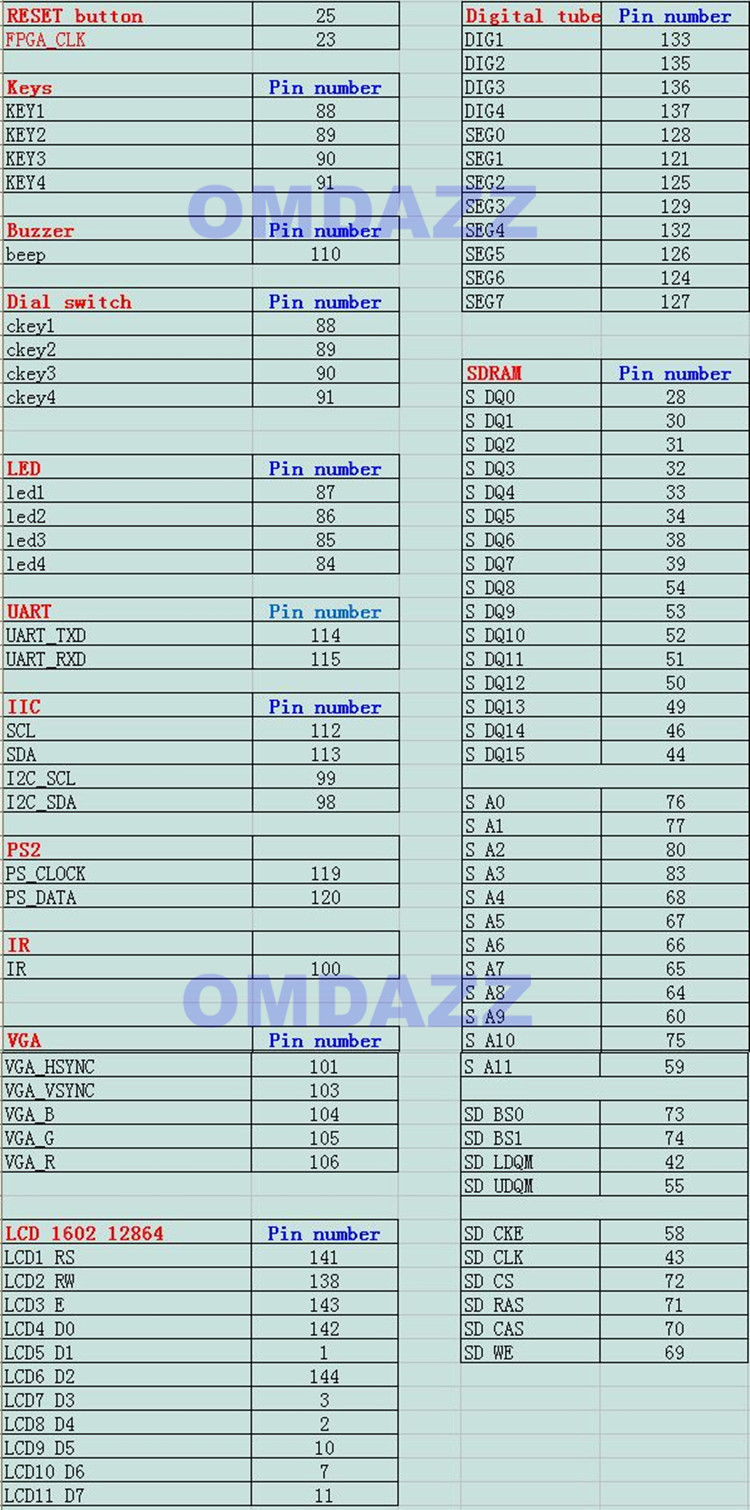
1 x Altera Cyclone IV EP4CE6 FPGA Development Board NIOSII EP4CE PCB and USB Blaster Jtag AS Programmer.
RoboticsBD RoboticsBD RoboticsBD RoboticsBD RoboticsBD RoboticsBD RoboticsBD RoboticsBD RoboticsBD RoboticsBD
RoboticsBD RoboticsBD RoboticsBD RoboticsBD RoboticsBD RoboticsBD RoboticsBD RoboticsBD RoboticsBD RoboticsBD
The latest price of Altera Cyclone IV EP4CE6 FPGA Development Board NIOSII EP4CE PCB and USB Blaster Jtag AS Programmer in Bangladesh is BDT 14,225 You can buy the Altera Cyclone IV EP4CE6 FPGA Development Board NIOSII EP4CE PCB and USB Blaster Jtag AS Programmer at best price from our RoboticsBD or visit RoboticsBD Office.
|
Please note that the product information provided on our website may not be entirely accurate as it is collected from various sources on the web. While we strive to provide the most up-to-date information possible, we cannot guarantee its accuracy. We recommend that you always read the product labels, warnings, and directions before using any product. |
|
Product Images are shown for illustrative purposes only and may differ from the actual product. |


Reference: RBD-1103
Stably support SignalTap II embedded logic analyzer function, no mistake while crawling data. Fully support all Altera products such as CPLD: MAX3000, MAX7000, MAX9000 and MAXII. FPGA: Stratix, StratixII, StratxIII, Cyclone, CycloneII, CycloneIII, ACEX1K, APEX20K and FLEX10K etc. Active serial configuration device: EPCS1, EPCS4, EPCS16, EPCS64 etc....
Reference: RBD-1807
Altera Cyclone IV FPGA EP4CE6E22C8N EP4CE6 Development Board
Reference: RBD-1830
FT245+CPLD High-Speed Program Altera USB Blaster Download Cable FPGA / CPLD Downloader
Reference: RBD-2367
ESP32-S3-WROOM-1-N16R8(16M Flash/8SRAM) Powerful ESP32-S3 chip for enhanced processing capabilities Dual Type-C USB ports for easy connectivity Built-in Wi-Fi and Bluetooth for seamless communication 16MB flash memory for ample storage space 8MB PSRAM for efficient multitasking Micropython support for easy programming Ideal for IoT projects, robotics, and...
Reference: RBD-1138
Board Based On AI-Thinker A9 GPRS Module Supports Firmware Upgrade Via Serial Port Operating Voltage: 5v
Reference: RBD-3629
Brand: Arduino Official
The Arduino Mega 2560 is a microcontroller board based on the ATmega2560. It has 54 digital input/output pins (of which 15 can be used as PWM outputs), 16 analog inputs, 4 UARTs (hardware serial ports), a 16 MHz crystal oscillator, a USB connection, a power jack, an ICSP header, and a reset button.Imported from DFrobot (02-July-2025)Made in ItalyArduino...
Reference: RBD-3180
The Mini Mega 2560 PRO (Embed) is a compact and versatile development board designed for a wide range of electronics projects. Based on the powerful ATmega2560-16AU microcontroller, it offers the same functionalities as the Mega 2560 but in a smaller, more portable form factor. This board is ideal for prototyping, advanced projects, and applications...
Reference: RBD-3310
LuckFox Pico Plus RV1103 Linux Micro Development Board, Integrates ARM Cortex-A7/RISC-V MCU/NPU/ISP Processors, With Ethernet Port
Reference: RBD-3609
Brand: Seeed Studio
The Seeed Studio XIAO ESP32-C6 is a thumb-sized, feature-rich microcontroller board built around Espressif’s powerful ESP32-C6 chip. Designed for next-generation IoT applications, it delivers robust multi-protocol wireless connectivity including Wi-Fi 6, Bluetooth 5 LE, Zigbee, and Thread—all within a compact 21 x 17.8mm form factor. With support for the...
Reference: RBD-2131
ESP32-S2 based WIFI development board Features S2FN4R2 WIFI IC Equipped with 4MB FLASH and 2MB PSRAM Type-C USB connectivity 27 digital input/output pins with support for interrupt/pwm/I2C/single wire ADC, DAC, I2C, SPI, UART, USB OTG
Reference: RBD-3212
The STM32 Starter Kit B is a comprehensive development kit designed for beginners and professionals to explore the STM32 ecosystem. Equipped with an STM32F103C8T6 microcontroller, this kit combines a development board, an STM32Block expansion board, and a breadboard for hands-on learning. Featuring onboard input/output modules, sensors, and LED circuits,...
Reference: RBD-3613
Brand: Seeed Studio
The Seeed Studio XIAO ESP32-S3 Sense is an advanced microcontroller board combining powerful processing, rich wireless communication, and onboard sensors in a thumb-sized footprint. Built around the dual-core ESP32-S3R8 chip, it features built-in Wi-Fi and Bluetooth 5.0, along with an integrated OV3660 camera, digital microphone, 8MB PSRAM, and 8MB Flash....
Reference: RBD-3595
The ESP32 WROOM-32D CP2102 Development Board with Micro USB offers a reliable and efficient platform for embedded development, featuring the versatile ESP32-WROOM-32D module. Equipped with the CP2102 USB-to-serial interface and Micro USB port, this board provides seamless connectivity for uploading code and serial communication. It is well-suited for DIY...
Reference: RBD-2309
ESP8285 ESP-M2 Development Board with built-in 1MB FLASH memory Features the reliable ESP8266 processor with full WiFi functionality Pre-programmed with NodeMCU Lua firmware for quick project setup Compact, solder-friendly design with onboard PCB antenna Ideal for smart home automation, IoT projects, and sensor networks
Reference: RBD-0009
54 Digital I/O terminals (14 of which have programmable PWM outputs). 16 Analog Inputs. 4 UARTs (hardware serial ports). 16 MHz crystal clock. RoboticsBD Operating voltage: 6 ~ 12v. Dimensions: 110 x 53 x 15 mm.
Reference: RBD-3597
The ESP32-WROOM-32U Development Board with Micro USB is a versatile, compact solution ideal for developers looking to leverage the full power of the ESP32 in a breadboard-friendly format. With a CP2102 USB-to-Serial chip and support for external antennas via the U.FL connector, this board is well-suited for wireless communication, IoT projects, and remote...
Reference: RBD-2789
The ESP32-S3 WROOM Development Kit 2 is a comprehensive development solution based on the ESP32-S3-WROOM-1 module, featuring an onboard PCB antenna and advanced peripherals. This kit comes bundled with an OV2640 camera, providing a complete hardware platform for prototyping and developing IoT, AI, and wireless communication applications.
Reference: RBD-3615
The YwRobot Mini Piano Expansion Board is an all-in-one learning and development platform designed for use with the Arduino Nano. It combines sound, input, visual feedback, and display functions in one compact module—ideal for music-themed electronics projects, STEM education, and prototyping. Note: Arduino Nano, OLED display, and other modules shown in...
Reference: RBD-2886
Microcontroller: ATmega32u4 Operating Voltage: 5V Flash Memory: 32 KB of which 4 KB used by bootloader SRAM: 2.5 KB EEPROM: 1 KB Clock Speed: 16 MHz Made in China
Reference: RBD-3231
Brand: Waveshare
The ESP32-S3 A7670E 4G Development Board is a versatile and powerful platform designed for IoT, smart home, and portable 4G WiFi applications. Combining the robust ESP32-S3R2 chip and A7670E 4G module, this board offers seamless LTE Cat-1/2G connectivity, GNSS positioning, and integrated camera support. With multiple power options, including solar...
Reference: RBD-2371
Powered by TSMC's 40nm technology for reliable and power-efficient performance. Supports multiple I/O connections with 2.54mm pin headers for easy peripheral integration. Equipped with CP2102-GM USB to Serial chip for smooth programming and debugging. Compact, durable design with versatile applications in IoT, automation, and robotics.
Reference: RBD-1809
Digispark Pro ATtiny167 Micro USB 16MHz
Reference: RBD-3117
Overview: The Milk-V Duo is an ultra-compact embedded development platform powered by the CV1800B chip. Designed for flexibility and high performance, it can run Linux and RTOS, making it an excellent choice for professionals, industrial ODMs, AIoT enthusiasts, DIY hobbyists, and creators. Despite its small size, this board offers powerful processing...
Reference: RBD-0350
100% Brand new and high quality STM32 Board Model: STM32F103C8T6. Core: ARM 32 Cortex-M3 CPU. Debug mode: SWD. 72MHz work frequency. 64K flash memory, 20K SRAM. RoboticsBD 2.0-3.6V power, I/O.
Reference: RBD-1806
Based on ESP32 240MHz Xtensa dual-core 32-bit microprocessor Operating Voltage: 2.7V – 4.2V Working Current: 60mA Battery Charging Current: 500mA
Reference: RBD-2160
Fully compatible with the PC. Moulded strain relief and PVC over moulding to ensure a lifetime of error-free data transmissions. Aluminium under mould shield helps meet FCC requirements on KMI/RFI interference. Foil and braid shield complies with fully rated cable specifications reducing EMI/FRI interference.
Reference: RBD-2126
Manufacturer: China Support TWI and SPI communication Input voltage (recommended) range from 7V to 12V Input Voltage (limit) range from 6V to 20V 20 digital input/output pins (of which 7 can be used as PWM outputs and 12 as analog inputs) Onboard ATmega32u4 microcontroller with 32KB flash memory, 2.5KB SRAM and 1KB EEPROM
Reference: RBD-1602
Microcontroller: ESP8266EX Operating Voltage: 3.3V Digital I/O Pins: 11 (all I/O pins have interrupt/PWM/I2C/one-wire capability, except for D0) Analog Input Pins: 1 Flash Memory: 4MB On-Board Switching Power Supply: Input Voltage Range: 9V to 12V Output: 5V at 1A Max
Reference: RBD-3261
The ESP8266 Witty Cloud ESP-12F WiFi Module is a powerful WiFi enabled processor in a compact package that incorporates an RGB LED, LDR light sensor and pushbutton for easy stand-alone operation.
Reference: RBD-3128
The LILYGO® T-SIM7670G-S3 is an advanced development board that integrates the ESP32-S3 MCU with the SIM7670G cellular module, enabling powerful IoT device capabilities with LTE 4G, GPS, and low-power long-range communication. This board is designed for projects that require reliable cellular connectivity and GNSS support, making it ideal for remote...
Reference: RBD-2490
Support TCP/IP protocol: TCP, UDP, ICMP, IPv4 ARP, IGMP, PPPoE and Ethernet Built-in 10BaseT/100BaseTX Ethernet physical layer Support automatic communication handshaking(full duplex and half duplex), Support automatic MDI/MDIX, automatically revise signal polarity Support ADSL connection (support PAP/CHAP certification mode in PPPoE protocol), Support...
Reference: RBD-1215
131 powerful instructions – Most Single Clock Cycle Execution 32 x 8 general purpose working registers Fully static operation Up to 20MIPS throughput at 20MHz On-chip 2-cycle multiplier Write/erase cycles: 10,000 flash/100,000 EEPROM Optional boot code section with independent lock bits In system programming by on-chip boot program True read while write...
Reference: RBD-2266
Versatile and powerful development board for IoT and embedded systems projects. USB Type-C port for reversible plug orientation and easy connection to computer or other devices. Built-in Wi-Fi and Bluetooth module for wireless connectivity. Arduino IDE compatibility for easy code writing and uploading. Suitable for a wide range of applications, including...
Reference: RBD-0572
Operating Power: 60mW/15fpsVGAYUV. Sleeping Mode: <20 uA. Lens Size: 1/6″. Max. Frame Rate: 30fps VGA. Sensitivity: 1.3V / (Lux-sec). dynamic range: 52 dB. Electronic Exposure: 1 to 510 row.
Reference: RBD-0655
Single row. 2.54mm pitch. 1 x 40 pins. Through-hole mount. 20mm Height. RoboticsBD
Reference: RBD-0663
Power supply voltage(VCC): 2.0, 3, 5.5 V. Output high VOH: 0.8VCC V Output low VOL: 0.3VCC V Response time (touch mode) : 60 mS Response time (low power mode) : 220 mS Can replace the traditional touch of a button Four M2 screws positioning holes for easy installation RoboticsBD
Reference: RBD-0963
Current and voltage display in turn, easy and comfortable to use. Small and portable, do not need other power supply. Measuring range: DC 3V – 9V / 0 – 3A (up to 5A ) Portable Device Interface: USB2.0, USB3.0 Product Weight: 0.025 kg Two output ports
Reference: RBD-1764
High Power DC-DC Step Down Module Input Voltage: 5-40V DC Output Voltage: 1.2-36V DC Efficiency: 95% Maximum Power: 200W
Reference: RBD-1339
With LCD display which powered by 1*LR44 battery (included) Zero settings at any position Measuring Range 0-150m (0-6") **Although the manufacturer claims that it is made of carbon fiber, we believe it is actually made of ABS plastic.
Reference: RBD-1039
The module was recycled from a mobile phone so you can say it is used. TTL serial port for serial port, you can link directly to the micro-controller. Don’t need MAX232. Power module automatically boots, homing network. Onboard signal lights all the way. It flashes slowly when there is a signal, it flashes quickly when there is no signal. In recent years...
Reference: RBD-1759
Display Resolution: 200 x 200 Display Screen Color: Black and White No backlight so keeps displaying last content for a long time even when the power is down Ultra low power consumption, basically power is only required for refreshing SPI interface, for connecting with controller boards like Raspberry Pi/Arduino/Nucleo, etc.